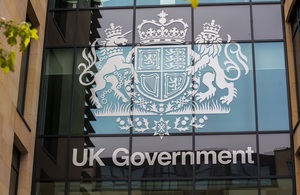April Labour Market Statistics for Scotland 2017
Unemployment in Scotland fell by 15,000 in the period December 2016 to February 2017, and now stands at 123,000, according to ONS data

The Scottish unemployment rate has fallen to 4.5 per cent, which is below the rate of 4.7 per cent for the whole of the UK.
The labour market statistics also show that employment in Scotland fell by 8,000 over the three months to February 2017. The number of those in employment in Scotland now stands at 2,596,000.
Secretary of State for Scotland, David Mundell said:
While there is some good news for Scotland in these figures, the falling employment numbers and rising inactivity statistics are a real cause for concern. They also come on the back of worrying GDP figures last week.
The UK Government is supporting the Scottish economy with over £1 billion new investment through the autumn statement and spring budget, on top of UK-wide investment in science, R&D and connectivity. We are also building an Industrial Strategy that will address long term economic challenges and drive growth across Scotland and the rest of the UK.
The Scottish Government now need to act urgently to secure the Scottish economy and help more people into work. Holyrood has new powers over tax and welfare, with the tools to shape Scotland’s economy. Rather than obsess about the constitution, Scottish ministers need to focus all their efforts on strengthening the economy and backing business to create jobs for people across Scotland.
Headline statistics for the December 2016 to February 2017 quarter:
• Employment in Scotland fell by 8,000 over the quarter, and fell by 12,000 over the year, to stand at 2,596,000.
• The Scots employment rate decreased by 0.1 percentage points over the quarter to 73.4 per cent. The rate is below the UK average of 74.6 per cent.
• Unemployment in Scotland fell by 15,000 over the quarter and is down 47,000 over the year. The level now stands at 123,000.
• At 4.5 per cent, the Scottish unemployment rate is below that of the UK at 4.7 per cent.
• Economic activity fell by 24,000 over the quarter and now stands at 2,719,000. Also, the economic activity rate decreased over the year to stand at 77.0 per cent.
• In March 2017, the number of people out of work and claiming Jobseeker’s Allowance was 47,600 and claimant count, including Universal Credit was 77,000.
Latest Data for Scotland:
Employment
The Labour Force Survey indicates that the number of people in employment in Scotland from December 2016 to February 2017 was 2,596,000. Employment was down by 8,000 compared to the previous three months, and down by 12,000 compared to the same quarter last year. The employment rate was down 0.1 percentage points on the previous quarter, and down by 0.4 percentage points compared the same quarter last year. By comparison, the Scottish employment rate is 73.4 per cent below the UK average of 74.6 per cent.
Unemployment
Unemployment in Scotland was down by 15,000 over the quarter December 2016 to February 2017 at 123,000. The level was down 47,000 on the same quarter last year. The unemployment rate was down 0.5 percentage points on the previous quarter at 4.5 per cent, which is down 1.6 percentage points over the year.
Jobseeker’s Allowance and Universal Credit
The number of people claiming Job Seeker’s Allowance (JSA) fell by 100 to 47,600 in March 2017. The level is down by 10,400 on March 2017. The claimant count level (JSA and Universal Credit) is up 2,300 over the month at 77,000 and the rate is up 0.1 percentage points over the month and up 0.1 percentage points over the year to 2.7 per cent.
Economic Activity
The number of economically active (defined as those in employment or ILO unemployed, and seasonally adjusted) in Scotland in the December 2017 to February 2017 quarter was 2,719,000. This was down 24,000 on the previous quarter, and down by 60,000 on prior year levels. Among those aged 16-64 the economic activity rate was 77.0 per cent, down 0.5 percentage points on the previous quarter, and down 1.8 percentage points over the year.
Updates to this page
-
made title unique
-
First published.